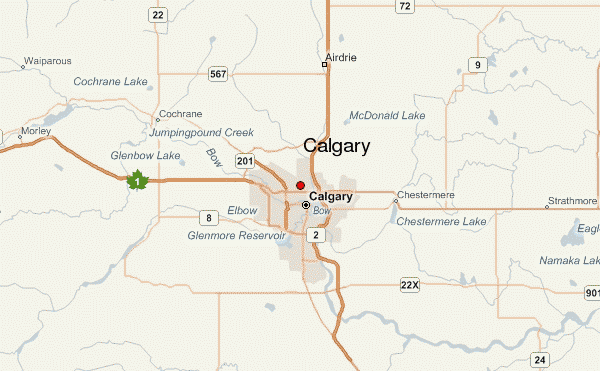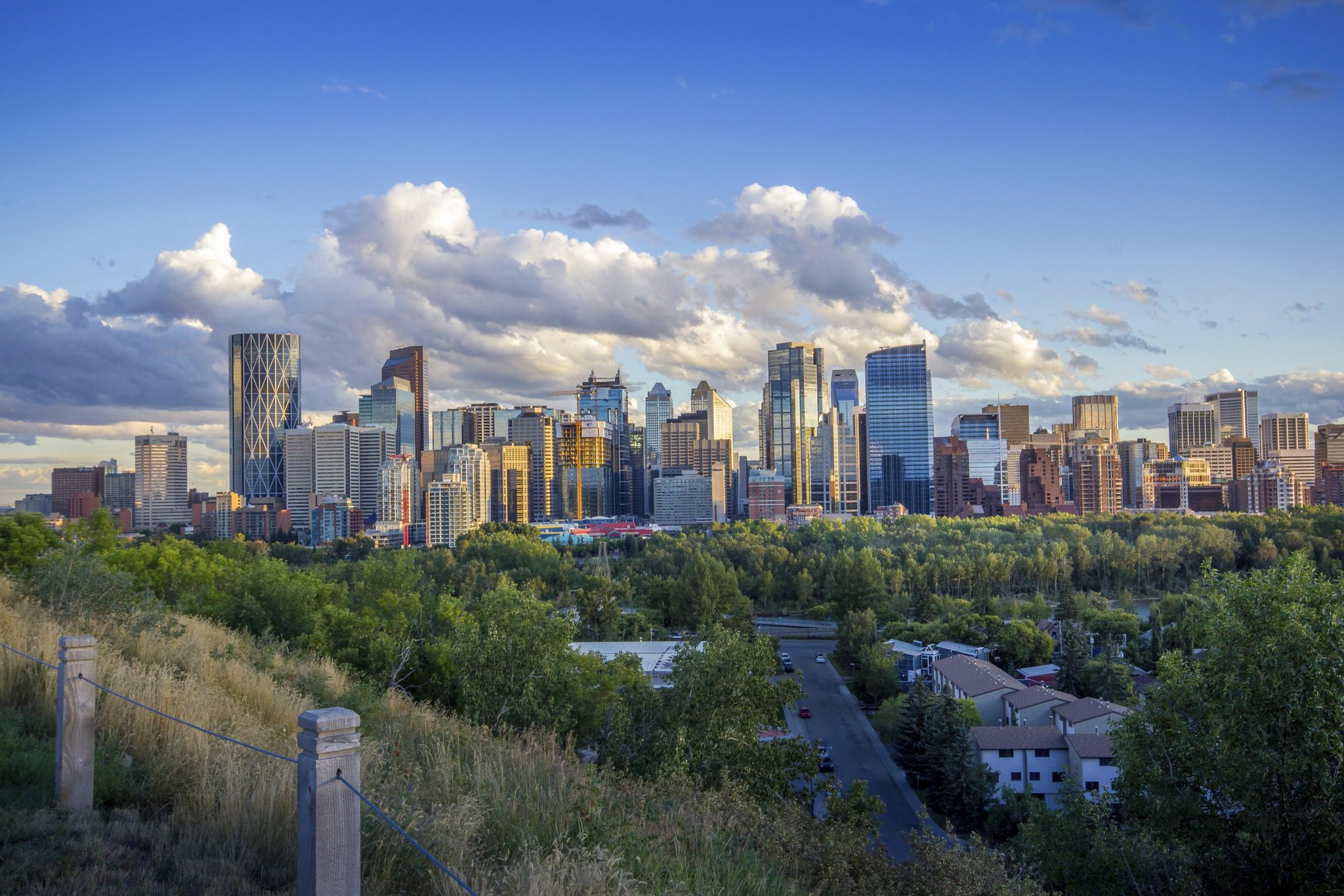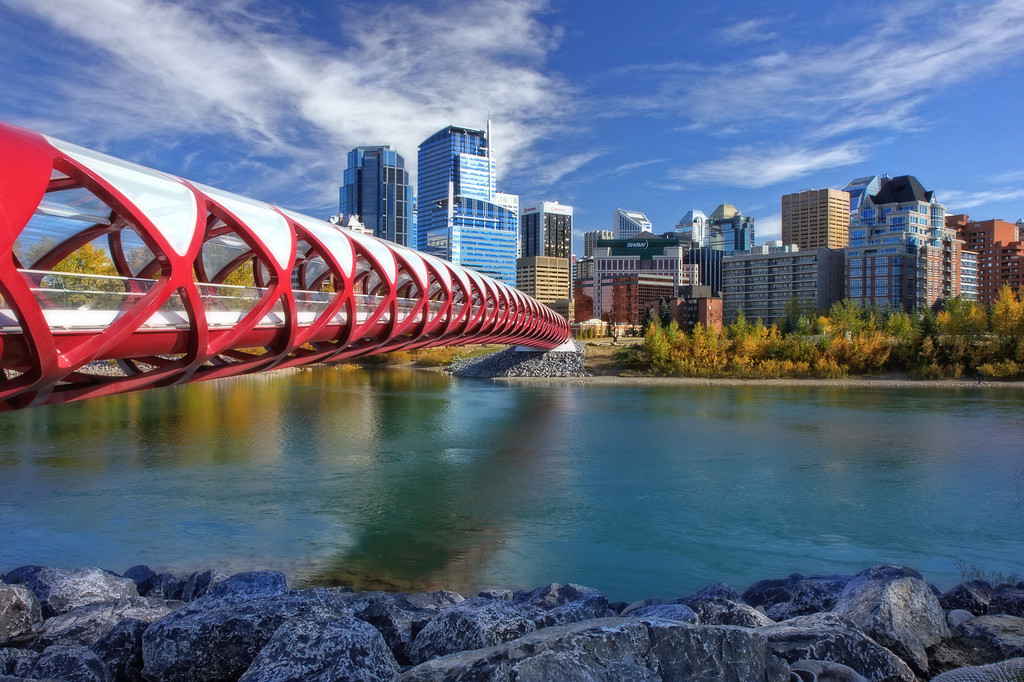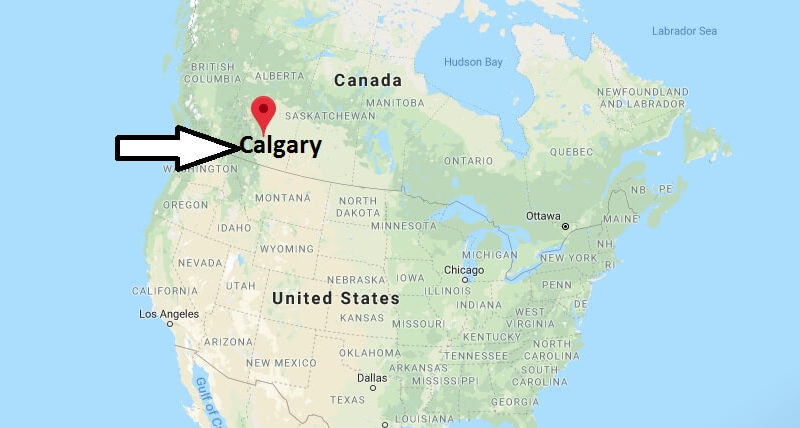Where is Calgary? A proper guide to locating the place.
In Alberta, Canada, Calgary is the most populous city, and its surrounding metropolitan area is the most populous in all Prairie Provinces. As of the year 2021, the city proper’s population was 1,306,784, and the metropolitan region’s population was 1,481,806. This placed the city as the third-largest city in Canada and the fifth-largest metropolitan region in the country.
Calgary is situated in the south of the province, at the confluence of the Bow and Elbow rivers, in the transitional area between the Rocky Mountain Foothills and the Canadian Prairies. It is approximately 80 kilometers (50 miles) east of the front ranges of the Canadian Rockies, approximately 299 kilometers (186 miles) south of Edmonton, and approximately 240 kilometers (150 miles) north of the international border between Canada and the United States.
According to the definition provided by Statistics Canada, the city is the endpoint of the Calgary-Edmonton Corridor at its southernmost point.

The economies of energy and financial services, film and television, transportation and logistics, technology, manufacturing, aerospace, health and wellness, retail, and tourism are all significant contributors to Calgary’s overall economy. The Calgary Metropolitan Region is home to the second-highest corporate headquarters out of Canada’s top 800 companies. In 2015, Calgary had the highest concentration of millionaires per person of any major city in Canada. In the year 2022, Calgary was ranked as the third most livable city globally, making it the most livable city in Canada and North America. It was the first time that a city in Canada hosted the Olympic Winter Games, which took place in 1988.
Etymology
The Scottish town of Calgary, from which Calgary, Alberta, got its name, is located on the Isle of Mull. The name comes from a combination of the Old Norse terms kald and gart, which mean “cold” and “garden,” respectively. Vikings most likely employed these terms when they referred to the Inner Hebrides. Alternately, the name could be derived from the Gaelic phrase cala ghearraidh, which translates to “beach of the meadow (pasture),” or “clear running water,” or “bay farm” in Gaelic.

Because of the sharp bend made by the Bow and Elbow rivers, the Indigenous peoples of Southern Alberta refer to the Calgary area as “elbow.” This is because the Bow and Elbow rivers meet at a point. In certain instances, the region got its name from the reeds that grew along the riverbanks and were utilized to produce bows. The Blackfoot language, known as Siksiká, has a word for this place called Mohknstsis akápiyoyis, which translates to “elbow many homes.” This name comes from the dense population of settlers in the area. A notable Indigenous term for the
e Calgary region is Mohknsstsisi, a condensed form of the Blackfoot name that simply means “elbow.” Mohknsstsisi originates from the Blackfoot language. In Nakoda and Stoney, the place is referred to as Wichispa Oyade, which also goes by Wenchi Espace. Both of these names mean “elbow” in their respective languages. In Cree, the place is referred to as otôskwanihk, which literally translates to “at the elbow,” or otôskwunee, which simply means “elbow.”
In Tsuutina, this place is referred to as Guts’ists’i (previous orthography: Kootsisáw), and it was once written as Kootsisáw (Sarcee). In the Kutenai language, the city’s name is pronounced: “aknuqtapik.” In the Slavey language, this region is referred to as Klincho-tiny-indicate, which literally translates to “many horse town.” This name is a reference to the Calgary Stampede as well as the city’s colonial roots.

Several initiatives have been undertaken to bring back Calgary’s Indigenous place names. Local post-secondary institutions made the “formal acknowledgments” of Indigenous territory in response to the Truth and Reconciliation Commission of Canada. In their statements, these institutions used the Blackfoot name for the city, Mohknstsis. In 2017, the Ston
ey Nakoda submitted a request to the Government of Alberta to rename Calgary Wichispa Oyade, which translates to “elbow town.” The Piikani Blackfoot, however, contested the legitimacy of the Stoney Nakoda’s claim.
Geographic location
The foothills of the Canadian Rockies and the prairies of Canada meet at the city of Calgary, which serves as a crossroads between the two. The Parkland and Grasslands Natural Regions provide the backdrop for the city in their foothills. The height above sea level at the airport is 1,076 meters (1,042.4 meters), and the height above sea level in downtown Calgary is roughly 3,420 feet (1,042.4 meters) (3,531 ft). The city had a total land area of 825.29 km2 in 2011. (318.65 sq mi). The city of Calgary can be found in southern Alberta, surrounded by subarctic climates and mountain ranges.
There are also two creeks and two rivers that cut through the city. The Bow River is the larger of the two rivers and flows west to south. Its name comes from the Bow Valley. The Elbow River originates in the south and runs northward until it reaches the Bow River, which is located close to the downtown area of Calgary at the historic site of Fort Calgary.
Nose Creek comes into Calgary from the northwest and flows south until it reaches the Bow River a few kilometers east of the Elbow and the Bow junction. When approaching Calgary from the southwest, Fish Creek will eventually meet up with the Bow River close to McKenzie Towne.

The urban core of Calgary, which spans 848 km2 (327 sq mi), is encircled on all sides by communities of varied densities that make up the city’s suburbs.
The counties of Rocky View County immediately surround the city to the north, west, and east as well as Foothills County to the south. The City of Airdrie is north of the Calgary Metropolitan Region. The City of Chestermere, the Town of Strathmore, and the Hamlet of Langdon are located east of the Calgary Metropolitan Region.
The towns of Okotoks and High River are located to the south of the Calgary Metropolitan Region. The Town of Cochrane is located northwest of the Calgary Metropolitan Region. Numerous rural subdivisions can be found to the west and northwest of Bearspaw, in Elbow Valley, Springbank, and Bearspaw. Southwest of Calgary may be where Tsuu T’ina Nation Indian Reserve No. 145 can be found.
Over the course of its history, the city has undertaken several property annexations to facilitate growth. In the most recent annexation of areas from the surrounding Rocky View County, finalized in July 2007, the city annexed Shepard, a former hamlet. It then positioned its limits adjacent to the Hamlet of Balzac, the City of Chestermere, and very close to the City of Airdrie. Shepard was positioned to become a part of the City of Chestermere.







